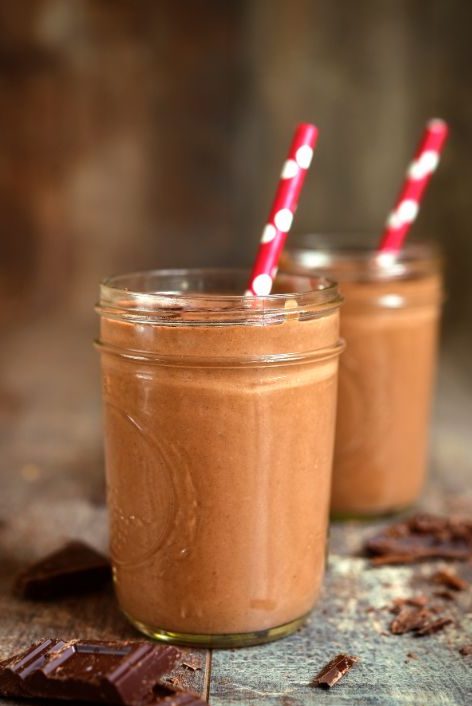
By Hannah Molloy ANutr, Nutrition Manager at Danone. BSc, MSc Applied Sports and Exercise Nutrition
Written in collaboration with Danone, GetPRO.
It won’t come as a surprise that protein is an important nutrient for exercise, but how much protein do we really need and what is the optimal type of protein and timing for consumption? Come with me as I dive into the latest recommendations around ‘the three T’s’ – protein type, timing and total intake needed for exercise performance and recovery. To put this into practice, I’ll also be sharing one of my favourite high protein recipes for achieving these recommendations on the go.
TOTAL: HOW MUCH PROTEIN DO I NEED?
Protein is an essential macronutrient, and adequate intake is important for everyone (not just those who regularly exercise). It is needed for vital bodily functions such as transporting nutrients and the immune response, as well as muscle growth and repair following exercise1,2. Out of the three T’s, total protein intake is perhaps the most important consideration when it comes to exercise. In fact, the absence of protein post exercise can have a negative impact on both recovery and performance3. Thus, getting the right amount of protein in the diet is a key consideration.
According to current UK dietary reference values, the amount of protein needed by the general population is 0.75 grams per kg of bodyweight per day4. Although, it is recognised by the International Society of Sports Nutrition and American College of Sports Medicine that athletes (ranging from recreational to elite) and regular exercisers have heightened protein requirements. To support muscle growth and repair post exercise, a protein intake in the range of 1.2-2.0g per kg bodyweight per day is adequate for most exercising individuals2,5.. This will also be influenced by the type, duration, and intensity of exercise carried out.
Is there such thing as too much protein? High protein diets have become popular in recent years both for building muscle and weight loss. Individuals with certain conditions may require higher protein intakes due to the role of protein in repairing bodily tissues1. Some research also indicates higher protein intakes may help to maintain muscle mass during periods of energy restriction5,6.
Although there is no strict guidance on an upper protein limit in the UK, guidelines set out by the Department of Health state that you should avoid intakes that exceed double the daily recommended amount of protein in your diet9. Furthermore, the upper limit defined by the Acceptable Macronutrient Distribution Range for protein is 35% of caloric intake9. Importantly, protein intakes above what is recommended for exercising individuals have not been shown to enhance protein synthesis to a greater degree or lead to incremental ‘gains’5,11. In other words, more is not always better – too much of any nutrient is generally not a good idea!
TIMING: DOES IT REALLY MATTER?
Within the field of sports nutrition, there is a big focus on how much protein is required to build muscle. But what time of day is best to consume it?
Sports nutrition guidelines set out by the International Society of Sports Nutrition and American College of Sports Medicine focus on protein timing as well as total intake, which has been shown to enhance training adaptations and even performance in athletic populations2,5. Let’s take a look.
Post exercise protein: Previously it was thought that there was a critical window straight after exercise whereby protein must be consumed to maximise muscle growth, but it’s since been demonstrated that the muscle remains sensitized to exercise up to 24 hours after a workout11,12 That means there is no need to down a protein shake on the way out of the gym, despite this being a common misconception amongst gym-goers.
It’s still a good idea to have a high-quality protein source in the 2-hour window post exercise to support increases in muscle protein synthesis12,13. Regular consumption of protein, evenly spaced throughout the day (15-25g every ~3 hrs) appears to have the most benefits in terms of optimising adaptations from exercise and potentially even performance2,5. So, instead of focusing on protein intake exclusively in the evening meal, individuals should try to include a source of protein in each meal and after key exercise sessions. Opting for high-protein snacks throughout the day can also be a practical way to meet daily protein requirements. Some good examples include yoghurt with fruit or nut butter, roasted chickpeas or milk-based smoothies.
What about protein pre-exercise? Carbohydrates are the main source of fuel used by the body during exercise and therefore should be prioritised in the pre-workout meal. That being said, some studies have observed benefits of consuming protein immediately before exercise and reported similar effects on muscle protein synthesis when compared to protein intake AFTER exercise13,14. There are no hard and fast rules about protein timing and it’s likely down to individual tolerances and preferences, as well as the type of training. Just be cautious that protein takes longer to be digested and converted to energy, which may have implications for digestion during exercise. Whilst protein timing can enhance adaptations to exercise, particularly in athletic populations, bear in mind that meeting your total protein and caloric intake throughout the day appears to be the most important factor2.
TYPE: WHICH IS THE BEST PROTEIN FOR SUPPORTING MUSCLE GROWTH?
There are a plenty of dietary protein sources which vary in their amino acid profiles and rates of absorption. This in turn may impact their effect on muscle protein synthesis and optimal consumption moment13. From this perspective, athletes and regular exercisers should think about which sources of protein they incorporate in their diet, in addition to the total and timing of protein intake.
- Essential amino acids play an important role in achieving maximal rates of muscle protein synthesis. Leucine, one of the three branched chain essential amino acids, is of particular interest in relation to exercise and has been shown to (independently) trigger muscle protein synthesis2,17. The International Society of Sports Nutrition recommend consuming 1-3g leucine per meal, but a balance of all essential amino acids is needed2. This can generally be achieved through eating a variety of protein sources in the diet.
- Animal sources of protein contain all nine essential amino acids, making them high quality complete proteins2,15. Some good examples include dairy products, eggs and lean meat and fish. Two of the most common proteins present in dairy products are casein and whey. They are both high quality proteins but absorbed at different rates13. Whey is more rapidly absorbed which may support greater increases in acute muscle protein synthesis following resistance exercise when compared to other types of protein19. In contrast, casein is more slowly absorbed and may play a role in promoting overnight muscle protein synthesis and recovery when consumed before bed.
A note on protein supplements:
Most types of protein should accompany main meals in addition to the other major food groups. Protein supplements can have a place, but most sports nutrition guidelines advise a food-first approach – that is choosing whole food sources of protein to meet daily protein requirements where possible2,5.
Protein-rich foods also provide other nutrients which the body needs, for example dairy products or fortified dairy alternatives provide an important source of calcium as well as other vitamins. Of course, it’s not always feasible for those with higher nutritional needs or busy lifestyles to meet their protein needs through the diet alone. To err on the side of caution, the use of protein supplements should be discussed with a sports nutritionist or dietitian first to assess the individual’s need. Athletes should take careful consideration before using any type of supplement and look out for those which are part of a batch testing program.
PRACTICAL WAYS TO MEET PROTEIN RECOMMENDATIONS
Including a protein source with each meal plus snacks should ensure you’re getting enough protein. Why not try this easy chocolate and banana smoothie – a delicious way to add a source of protein into your day, embracing a ‘food first’ approach?
CHOCOLATE BANANA SMOOTHIE
SERVES 1
INGREDIENTS
- 1 GetPRO UHT Chocolate
- 1 banana
- 1 tbsp flax seeds
- 1 tbsp almond butter
- Handful ice cubes
INSTRUCTIONS
- Place all the ingredients together in a blender and blend to a smooth texture.
- Pour into a glass and enjoy!
SUMMARY
To summarise, athletes and those looking to build muscle should consider the type, timing and total amount of protein they include within their diet. As protein plays an important role in muscle growth and repair, not consuming adequate protein may have a negative impact on recovery and even performance. Consuming a variety of protein sources throughout the day will likely optimise adaptations from exercise training. And as a final point, whilst protein intake is important, adequate amounts of protein should be balanced with other macronutrients to achieve a balanced diet.
Written in collaboration with Danone, GetPRO
Disclaimer: This blog has been written in collaboration with the nutrition team at Danone, GetPRO and reviewed by the MyNutriWeb nutrition and dietetic team. Approval of each sponsor and activity is carefully assessed for suitability on a case by case basis. Sponsorship does not imply any endorsement of the brand by MyNutriWeb, its organisers, its moderators or any participating healthcare professional, or their association. Sponsorship funds are reinvested into the creation and promotion of professional development opportunities on MyNutriWeb.
YOU MAY ALSO BE INTERESTED IN:
Protein: For Exercise Performance and Recovery







Thanks for this interesting blog on protein intake. Can this be useful as a guide to advise young regular sports players like 10 to 12 year old footballers? I am talking about both girls and boys. At that stage in their lives kids become less compliant to healthy food and tend to be drawn to junk foods and high sugar consumption.
Reply from Hannah Molloy: Children and adolescents do have additional protein requirements to support general growth and development but providing total energy requirements are met, the recommendations provided in the blog can be used as a guideline. It’s also important that young athletes are encouraged to meet their nutrient needs by the consumption of whole foods rather than supplements.
Regarding your passage on “Regular consumption of protein, evenly spaced throughout the day (15-25g every ~3 hrs) appears to have the most benefits”
Have you take note of this recent study? And what are your thoughts on this? https://www.ncbi.nlm.nih.gov/pmc/articles/PMC10772463/
showing that “the ingestion of 100 g protein results in a greater and more prolonged (>12 h) anabolic response when compared to the ingestion of 25 g protein” and “demonstrate that the magnitude and duration of the anabolic response to protein ingestion is not restricted and has previously been underestimated in vivo in humans.”
From Hannah Molloy:
Thanks for your question. The guidance in this article reflects current UK dietary guidance and international sports nutrition guidelines which takes into account all of the available evidence at the time. That being said, I’ve tried to consider more recent research too. As this study was done in vivo, it’s difficult to draw conclusions on the effects of larger protein doses on muscle protein synthesis when protein is consumed as part of a wholefood /balanced meal. However, it’s a very interesting area of research and one that’s constantly evolving so thank you for sharing.